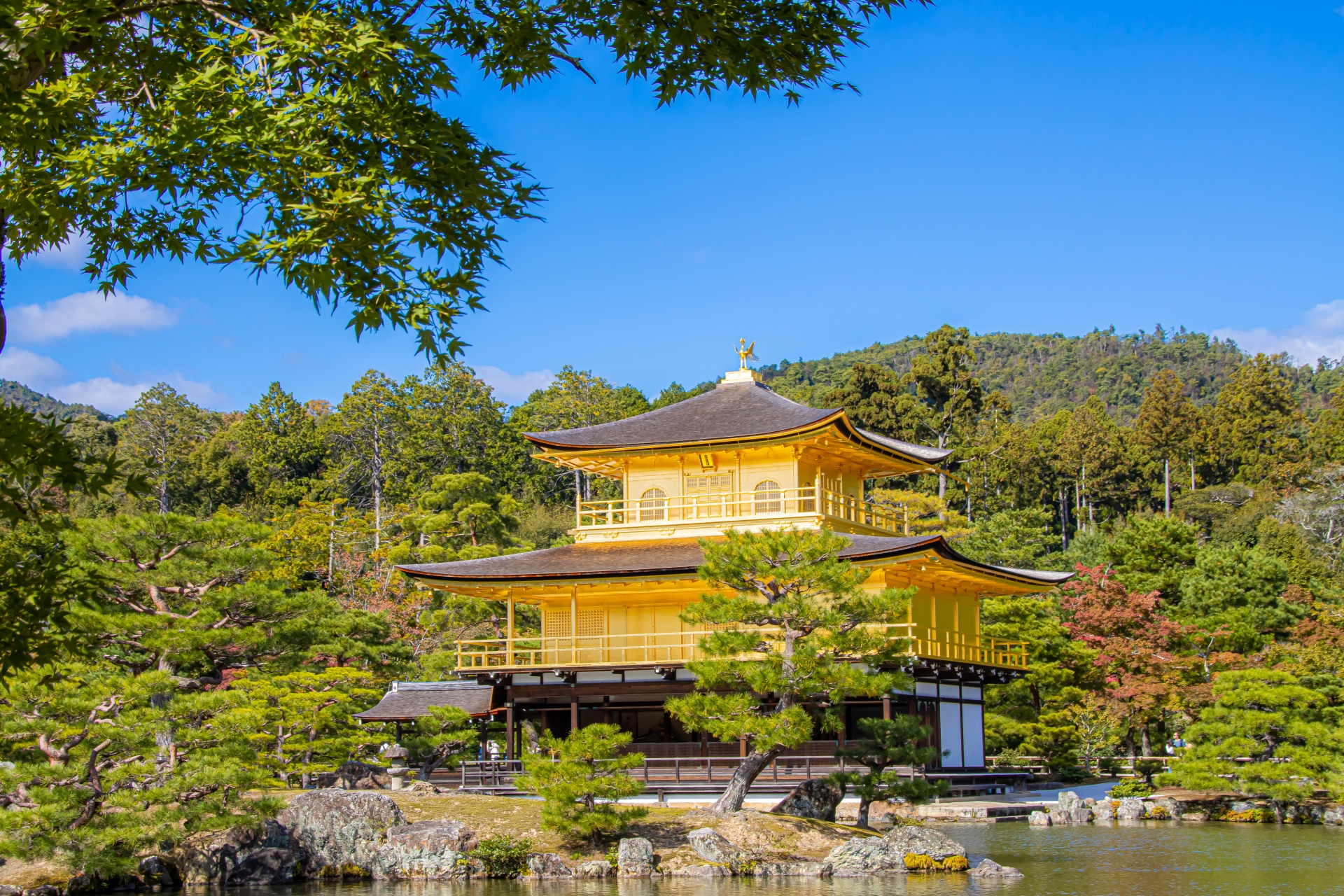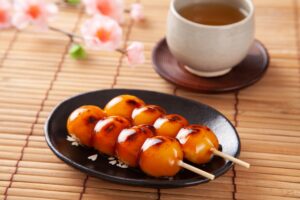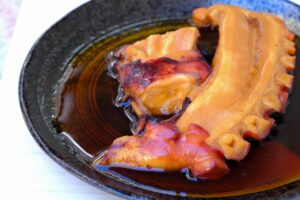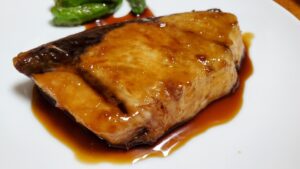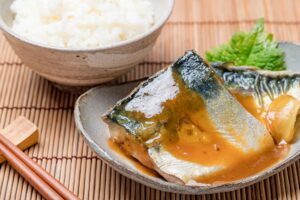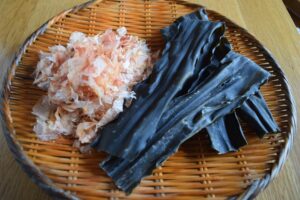Kinkakuji, also known as the Golden Pavilion, stands as one of Japan’s most famous landmarks. Located in Kyoto, this Zen Buddhist temple draws millions of visitors each year, captivated by its dazzling gold leaf-covered exterior and peaceful surroundings. This guide will provide insight into the temple’s history, architecture, and practical tips for travelers seeking an unforgettable visit to this UNESCO World Heritage site.
The Historical Legacy of Kinkakuji
Kinkakuji has a rich historical background that reflects Japan’s spiritual and cultural heritage.
Origins of Kinkakuji
Kinkakuji was originally built in 1397 by Shogun Ashikaga Yoshimitsu, who intended it to serve as a retirement villa. After his death, the villa was converted into a Zen Buddhist temple, aligning with Yoshimitsu’s spiritual interests. The pavilion symbolizes Kyoto’s cultural prominence during the Muromachi period. Its design was influenced by the evolving Zen Buddhist aesthetics of the time, making it an important cultural and religious site.
Kinkakuji and its Reconstruction
Kinkakuji has experienced significant challenges throughout its history. In 1950, the temple was tragically set ablaze by a young monk, leading to the destruction of the original structure. Fortunately, in 1955, the pavilion was reconstructed to its former glory. The restoration work faithfully replicated the original design, ensuring that future generations could continue to admire the temple’s historical beauty.
Architectural Marvels of Kinkakuji
Kinkakuji’s architecture is an iconic example of Zen Buddhist design combined with unique gold accents.
Zen Architecture and Gold Leaf Usage
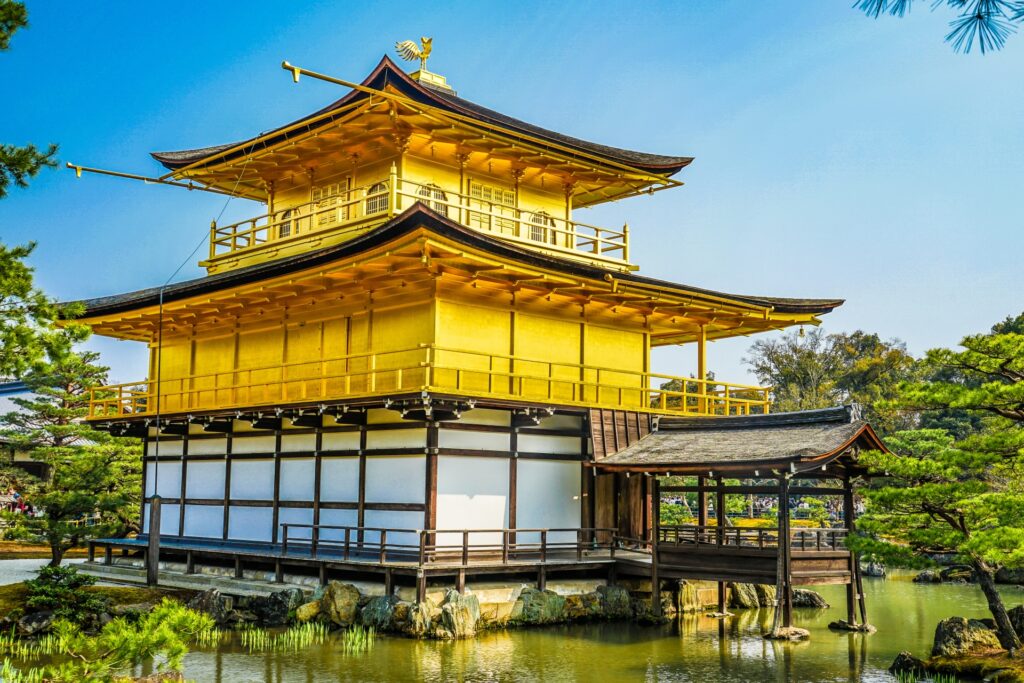
Kinkakuji’s architectural design reflects the Zen Buddhist style, focusing on simplicity and harmony with nature. However, its most striking feature is the use of gold leaf, which covers the pavilion’s upper floors. This gold symbolizes both spiritual enlightenment and material wealth, serving as a metaphor for the juxtaposition of the physical and spiritual realms in Zen Buddhism. The brilliance of the gold contrasts with the natural surroundings, creating an iconic image that resonates deeply with visitors.
Why is Kinkakuji Covered in Gold?
The gold leaf that adorns Kinkakuji has both religious and historical significance. Shogun Yoshimitsu’s ambition to demonstrate his wealth and power influenced the decision to cover the pavilion in gold. At the same time, the shimmering exterior is a reflection of Zen Buddhist beliefs, symbolizing purity and detachment from material desires. The golden exterior allows Kinkakuji to stand out among other temples, making it a visual masterpiece of Kyoto.
Planning Your Visit to Kinkakuji
Ensure you have all the necessary information to make the most of your visit to Kinkakuji.
Practical Visitor
When planning a visit to Kinkakuji, it is important to consider several key details. The temple is open year-round from 9:00 AM to 5:00 PM, with an entry fee of ¥500 for adults and ¥300 for children. It is best to visit early in the morning or later in the afternoon to avoid crowds, especially during peak tourist seasons like spring and autumn. From Kyoto Station, visitors can take a direct bus or taxi, with the bus being the more economical option.
Reference: ACCESS | Kinkaku-ji | 臨済宗相国寺派
Photography Tips at Kinkakuji
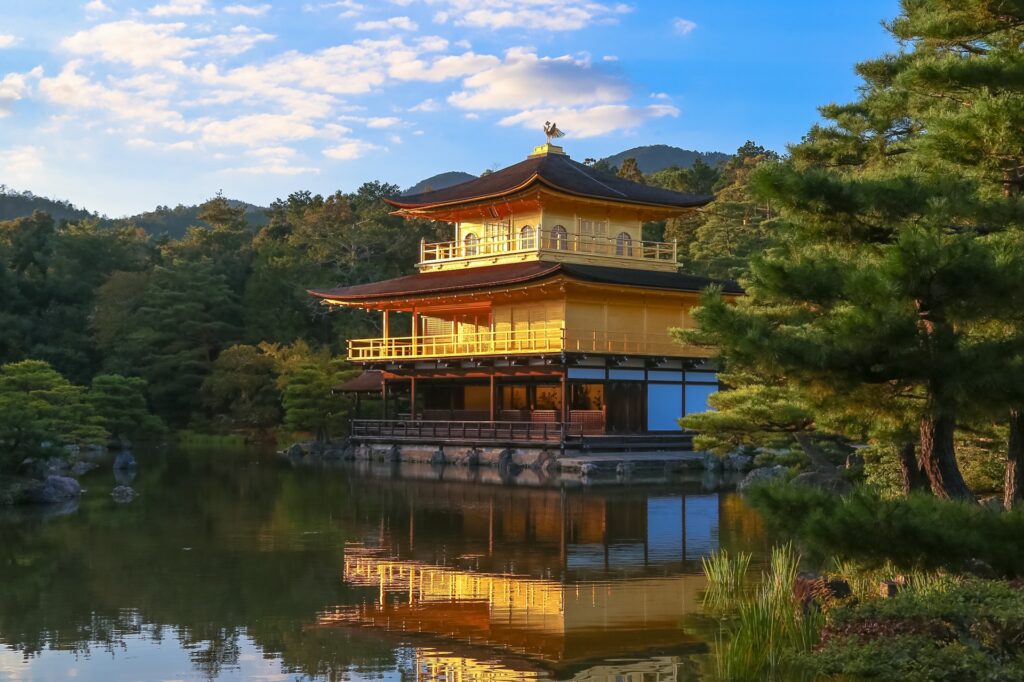
Kinkakuji is a photographer’s dream. To capture the pavilion’s best angles, focus on the reflection of the temple in the surrounding pond, known as Kyoko-chi (Mirror Pond). The best lighting conditions are typically during early morning or late afternoon when the sun casts a golden glow on the pavilion. For an even more dramatic effect, visit during the fall or winter when the surrounding foliage or snow adds a beautiful contrast to the golden structure.
Kinkakuji vs. Ginkakuji: Historical and Architectural Differences
Kinkakuji and Ginkakuji, the Silver Pavilion, are often compared for their cultural importance.
Kinkakuji, the Golden Pavilion, and Ginkakuji, the Silver Pavilion, are often compared due to their parallel histories. While Kinkakuji is covered in gold, Ginkakuji, built later by Ashikaga Yoshimasa, was intended to be adorned in silver but remains unfinished in that regard. Architecturally, Kinkakuji is more extravagant, representing wealth and power, whereas Ginkakuji embodies the wabi-sabi aesthetic of simplicity and impermanence. Depending on whether a visitor seeks grandeur or subtlety, one may find Kinkakuji or Ginkakuji more appealing.
Hidden Gems and Lesser-Known Facts about Kinkakuji
There are many seasonal events and garden features at Kinkakuji that visitors often miss.
Seasonal Events at Kinkakuji
Throughout the year, Kinkakuji hosts several seasonal events that offer a deeper connection to its spiritual roots. The New Year’s celebration, known as “Shusho-e,” invites visitors to pray for prosperity in the coming year. Spring and autumn are especially beautiful, as the changing foliage transforms the temple’s surroundings, making it the perfect backdrop for these cultural events.
The Surrounding Gardens and Landscape
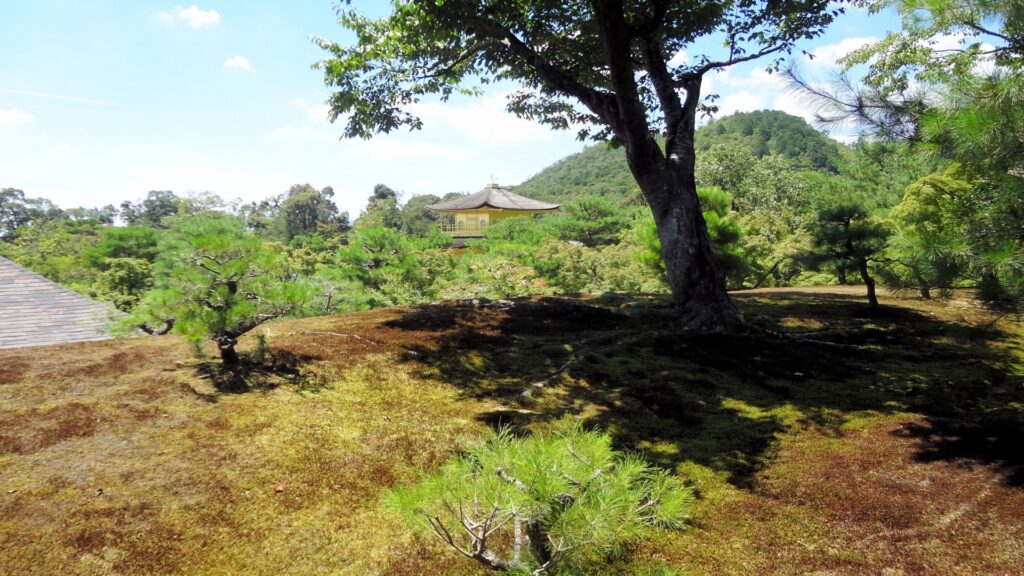
Kinkakuji’s garden is as meticulously designed as the temple itself. Following traditional Japanese landscape design principles, the garden is intended to provide a sense of tranquility and reflection. The pond, trees, and stones are placed deliberately to create a balanced, harmonious environment. Visitors can stroll along the paths and admire the seasonal beauty of cherry blossoms, autumn leaves, and the serene waters of Kyoko-chi.
Conclusion
Kinkakuji is more than just a temple; it is a symbol of Japan’s rich cultural and religious history. Its golden facade, Zen design, and peaceful surroundings make it a must-visit destination in Kyoto. Whether you are a history enthusiast, an architecture lover, or simply looking for a beautiful and peaceful location, Kinkakuji offers a unique and memorable experience.

